Safari’s first dinosaur of 2022 has finally arrived, and while it might not be the show-stopper some would hope for, this sauropod is a well-made representation closely based on published material.
We love dinosaurs – especially BIG dinosaurs. The sheer size possessed by many of these ancient reptilian creatures has always played a part of their allure to the public. Naturally, new discoveries of large dinosaurs, especially theropods and sauropods, tend to be hyped up by the media for all their worth to excite audiences with the latest “biggest-ever” dinosaur – even if the reality of such finds ultimately fall short of said reports.
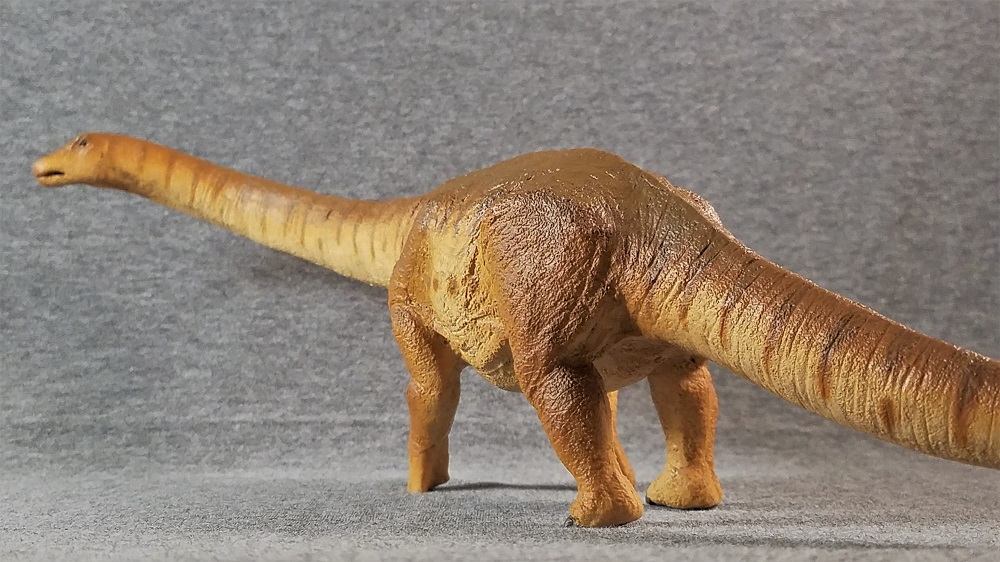
One dinosaur discovery which actually did (nearly) meet the expectations of the media was Patagotitan, a long-necked titanosaur named after the region it was discovered. Described from substantial remains for a giant sauropod – around 130 bones in total between six skeletons – Patagotitan received substantial news coverage following the official publication of its description in 2017; and at least two full-sized reconstructed mounts were produced for display at the Chicago Field Museum and the American Museum of Natural History. Despite the publicity, however, no toys or merchandise of this dinosaur appeared to be produced for several years. The sad irony of giant dinosaurs is: giant dinosaur toys don’t necessarily sell well – or at least, they’re expensive enough to produce that not many companies take the risk anymore.

It is mid-2022 as of this writing, and thankfully at least one company has come up to bat for the new giant of Patagonia – that being the reliable and reputable Safari ltd, coming in to the year with their first belated-but-anticipated first batch of new releases, with Patagotitan leading the charge for the Prehistoric World line. Safari ltd has continued to produce some fine sauropod models at decent sizes over the years; but when Patagotitan was first revealed, the reception to the model was mixed in some circles. Does the final model stand up to scrutiny, now that it’s arriving in customers’ hands?
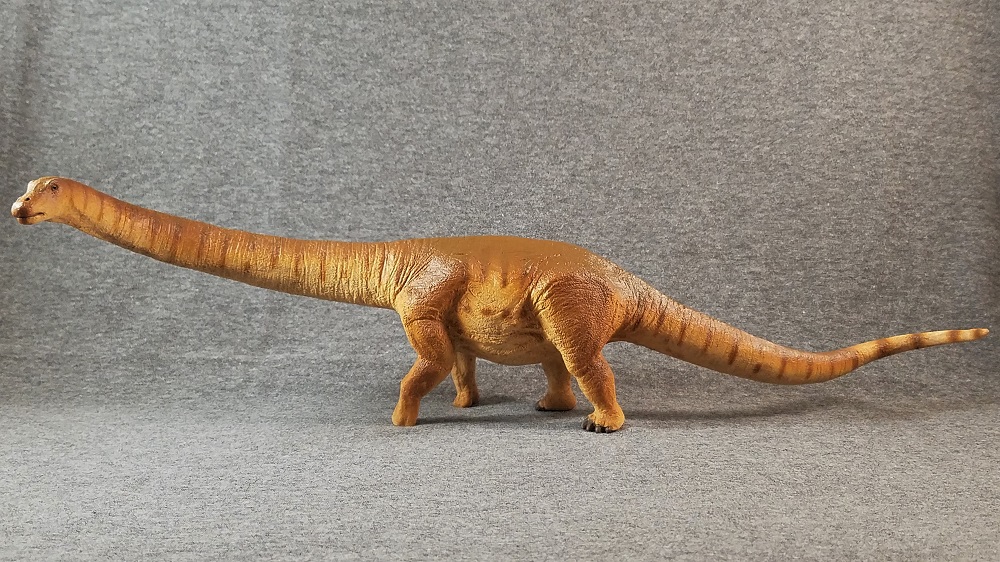
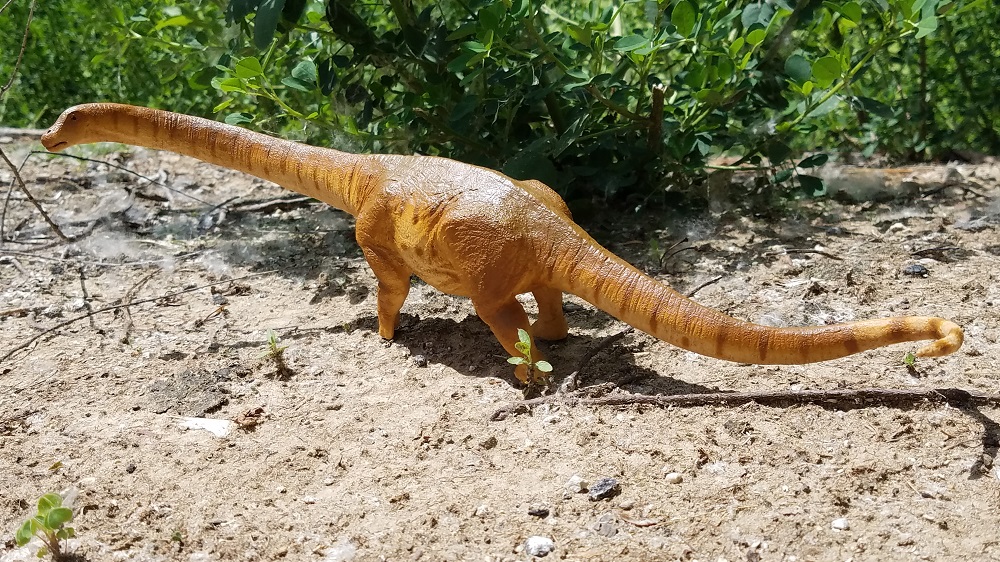
The Wild Safari: Prehistoric World Patagotitan measures 15 inches long, according to Safari’s official description; however, when compensating for curvature in the neck and tail, the model would actually measure around 18.5 in (47cm) when stretched end to end. This is similar in dimensions to other sauropods in Safari’s current catalog, but it’s still well below the typical scale range for Safari’s dinosaur models. A proper 1:35 Patagotitan would be nearly twice this model’s size – and likely twice as expensive, at the least. The model is posed in a neutral stance (sort of – I’ll explain later) with the animal mid-stride, neck stretched out forward and head turned to the left in casual observation.
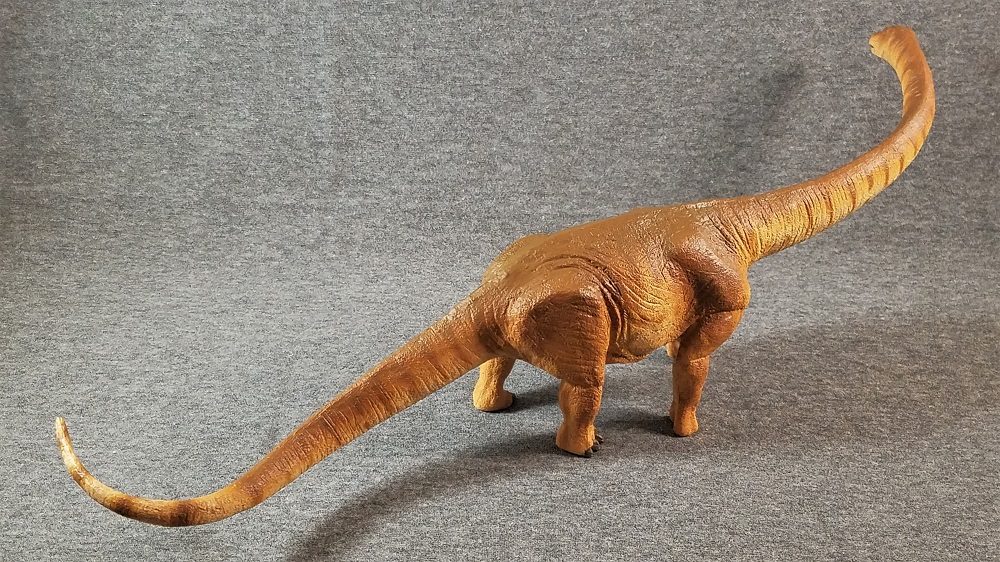
Designed by Safari’s leading dino sculptor Doug Watson, Patagotitan appears to to draw considerable reference from the original description paper’s skeletal by Kenneth Lacovara, as well as the accompanying illustration by Jorge Gonzalez. Like Gonzalez’ art, the model is colored primarily in dual tones of sandy-tan and muddy-brown. Simple striping and spotting accentuates the gradient shift from top to bottom; coincidentally, the pattern is reminiscent to the older 1997 Wild Safari Apatosaurus model. Texturing on the model features the oft-seen wrinkles and creases across the body, with emphasis around the hips and the base of the neck. Wrinkly elephantine skin is an old cliché for sauropods, but on closer examination this Patagotitan actually subverts initial expectations with much finer details to the skin. Tiny irregular scales are mottled all over the body, giving the model a slightly coarse texture like mild sandpaper. I find the tactile sensation of the model’s surface pretty satisfying, and the departure/subversion of old stereotypes is much appreciated.
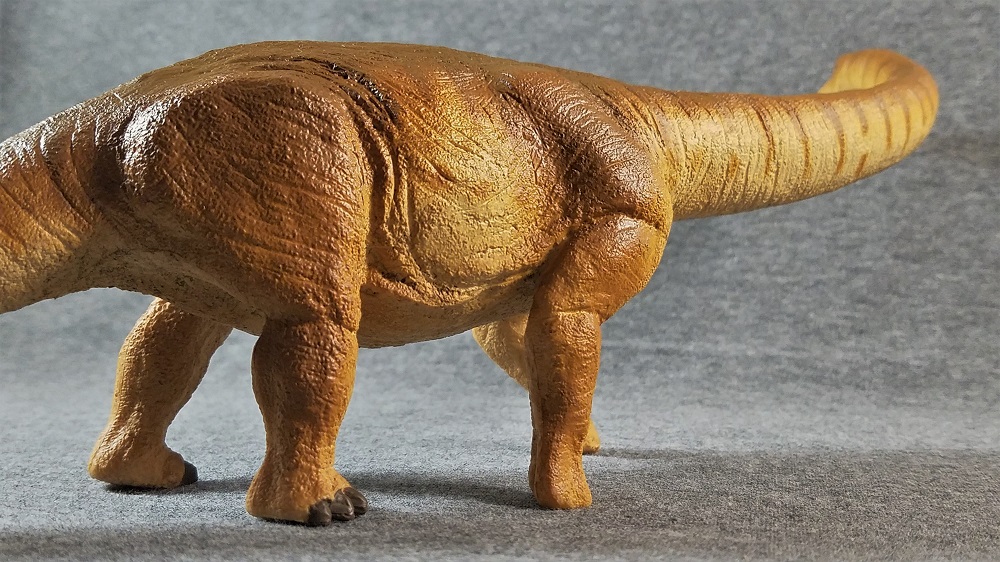
Not all stereotypes are evaded, however. As previously mentioned, the model closely resembles the skeletal provided by Kenneth Lacovara for the original scientific paper. With its neck and back parallel to the ground, tail slung low behind, both the skeletal and the Safari model appear just a bit old-fashioned on first impression. More contemporary reconstructions of sauropods – including a few skeletals of Patagotitan itself – have returned to restoring sauropods with a taller, upwards-sloping spine culminating in the head raised high above the ground. Sauropod necks were fairly flexible, of course, so this model could arguably be captured mid-pose, perhaps stooping for a drink or investigating something of interest down low. The dimensions of the neck appear to match the torso and tail proportionally, with some degree of variation depending on how compact the torso is reconstructed between skeletals. The angle of incline to the spine also varies; Safari’s model opts for a positioning of the shoulder blades at a shallower angle, resulting in a more horizontal back posture. Interestingly, the life-size skeletal mount of Patagotitan at the American Museum of Natural History is displayed in very similar posture; whether this is a coincidence as a result of shared reference, or a deliberate collaboration between companies, is anyone’s guess.

One feature the model actively corrects over the Lacovara skeletal is the positioning of the hind feet, which are illustrated in digitigrade posture for the skeletal. Recent studies suggest sauropods were, in fact, plantigrade (walking on the soles of the feet, like humans, bears, and pterosaurs) instead of digitigrade (walking on the toes) like most dinosaurs. Other traits are more speculative: four clawed toes are featured on the hind feet, which are possible but unconfirmed for this genus. Evidence suggests four toes would have been visible, but whether or not all four would have been clawed remains up for question. The fore feet, in contrast, have no toes whatsoever, which is based in definite fossil evidence. The skull of Patagotitan is unknown – a common occurrence with titanosaur fossils – so any reconstruction has to take a guess in this department. For Safari’s model, the skulls of the genera Sarmientosaurus, Bonitasaura, and Tapuisaurus were used as reference, with the final design featuring a long concave-sloped head most resembling Sarmientosaurus (although, depending on the study, Bonitasaura might be more closely related and thus a better reference). Detailing is fairly simple on the head, appearing slightly cheeked and with large nostrils at the front of the snout. Small ear holes are also sculpted in for the sharp-eyed collector to spot, being left unpainted while the eyes, nose, and mouth are all highlighted in black (neatly applied, although one nostril on my copy is sloppy. Allergies, I guess?).
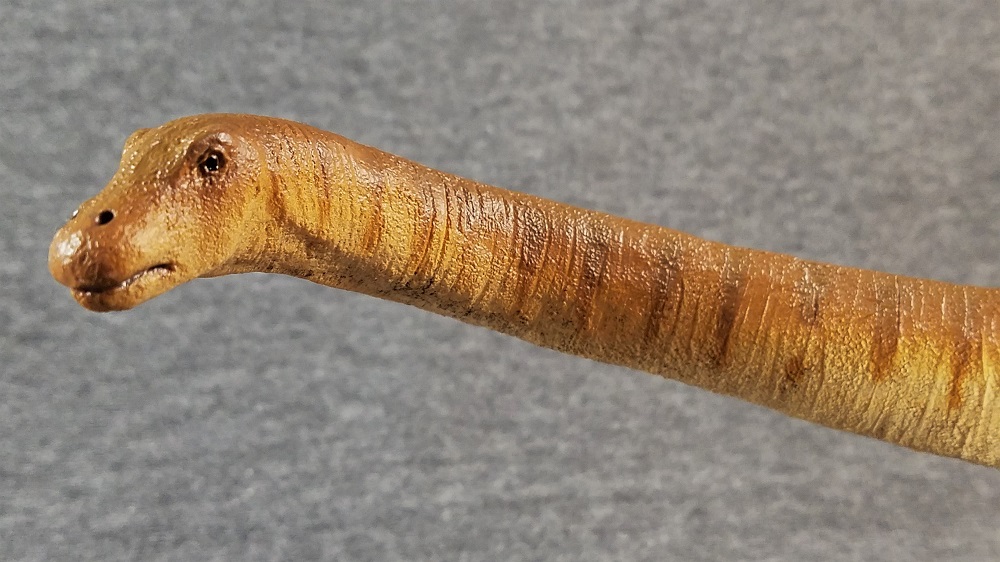
When collectors first responded to the promotional photos released by Safari ltd, reactions ranged from delight to disappointment, with some criticizing the design of being too old-fashioned or derivative. While I can understand these misgivings to a certain extent, having held the figure in hand I find the Wild Safari Patagotitan to be a well-made and satisfying model of a dinosaur which was overdue to have some toys to its name. Is it one of Safari’s best sauropods? Perhaps not; but it makes for a solid addition to the long-necked toy herd all the same. Stocking new releases has been a slow process this year, but you can currently buy a Patagotitan of your own direct from Safari ltd’s website; and additional retailers will hopefully be getting stock in soon as well.

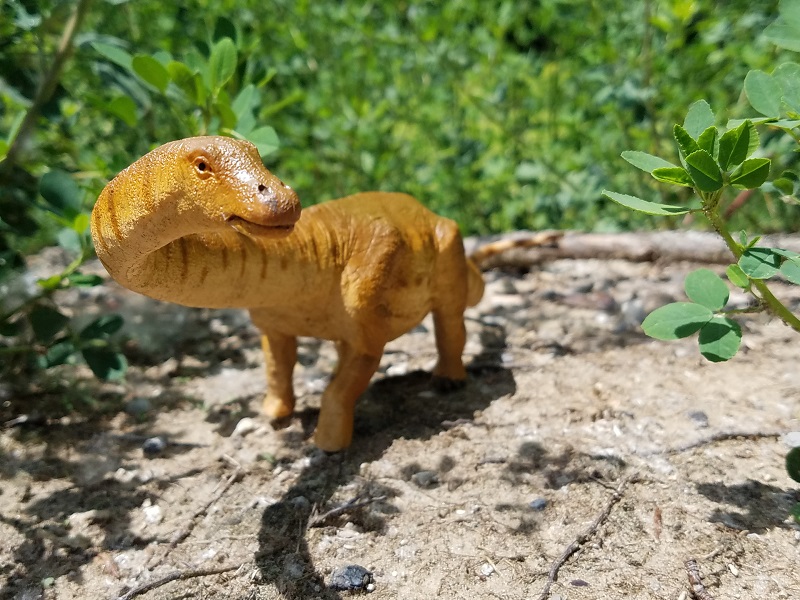
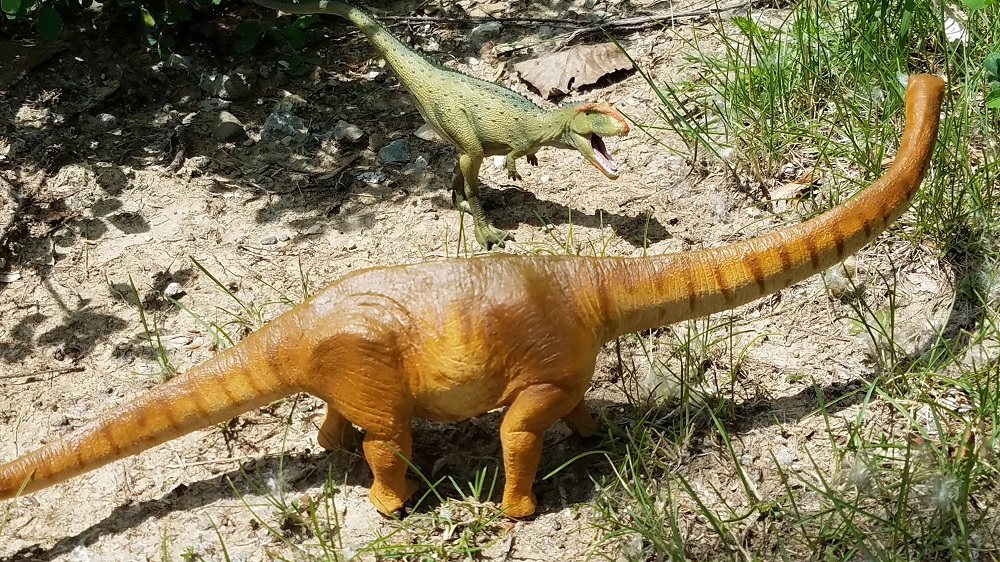
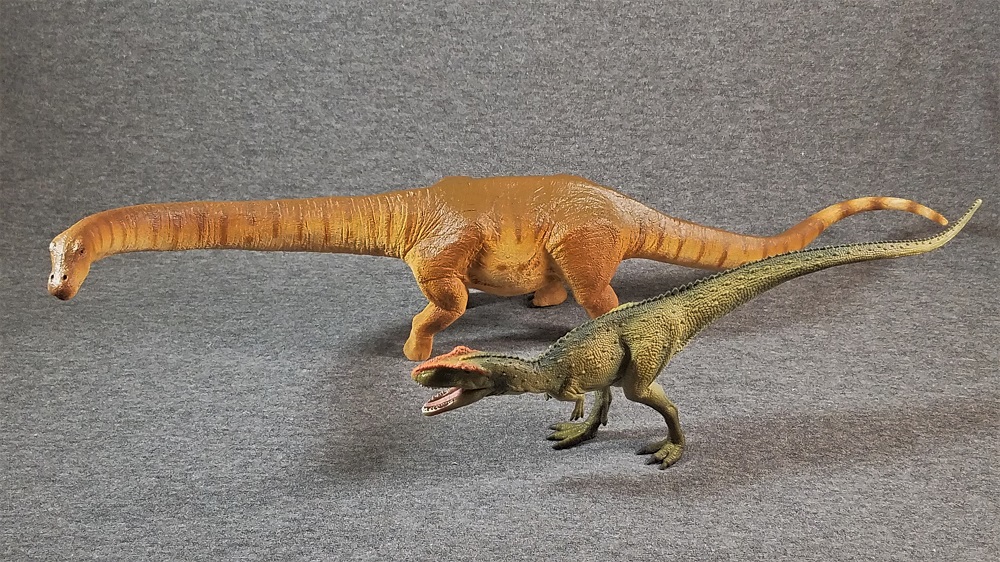

Support the Dinosaur Toy Blog by making dino-purchases through these links to Ebay and Amazon. Disclaimer: links to Ebay.com and Amazon.com on the Dinosaur Toy Blog are often affiliate links, when you make purchases through these links we may make a commission

I find that he is a great figure, a very good representation of the dinosaur and well researched as well, as it should be. The coloration and color patterns I find them more similar (if not identical) to the original Diplodocus Carnegie. Although I would have liked other types of patterns and coloring of other shades, I do not find it annoying, and others gives guidelines for a personalized repainting. Hopefully more in the future we will have more variety of Patagonian sauropods
Nice to see a review of this model. Looks good, however, is the head really that much bigger in proportion to the body? Or is the angle of it make it look bigger in all the photos I have seen so far? It’s the only part that is throwing me off.
I’m hoping to find it in a store someday so to avoid the inevitable high shipping.
The might be relatively larger than what you’d see on, say, a diplodocid toy; but I wouldn’t say it’s unusually large for sauropod in broad terms. Perspective of the photos can definitely affect the appearance, though.
It’s a perfectly good sculpt, but I’m just not that into giant sauropods. I’d much rather see Safari give some love to smaller, weirder sauropods like Magyarosaurus, Dicraeosaurus, and my favourite, Brachytrachelopan. Or to early sauropodomorphs like Plateosaurus, Riojasaurus, and Aardonyx.
Some more small/odd sauropods would be welcome indeed! There’s quite a dearth of “prosauropod” toys as well.
Actually, I’m pleased by both the coloration and the texturing of the sculpt, and I am not put off by the pose. This will serve as a subadult in my Safari/Carnegie Safari diorama.
Good article. The patagotitan is a good but not spectacular figure like the malawisaurus or the camarasaurus of the same brand. Honestly, it doesn’t convince me very much, although in any case if I see that it is sold in my store I will buy it. It could be more detailed, that said, it is not one of the best figures in Safari.